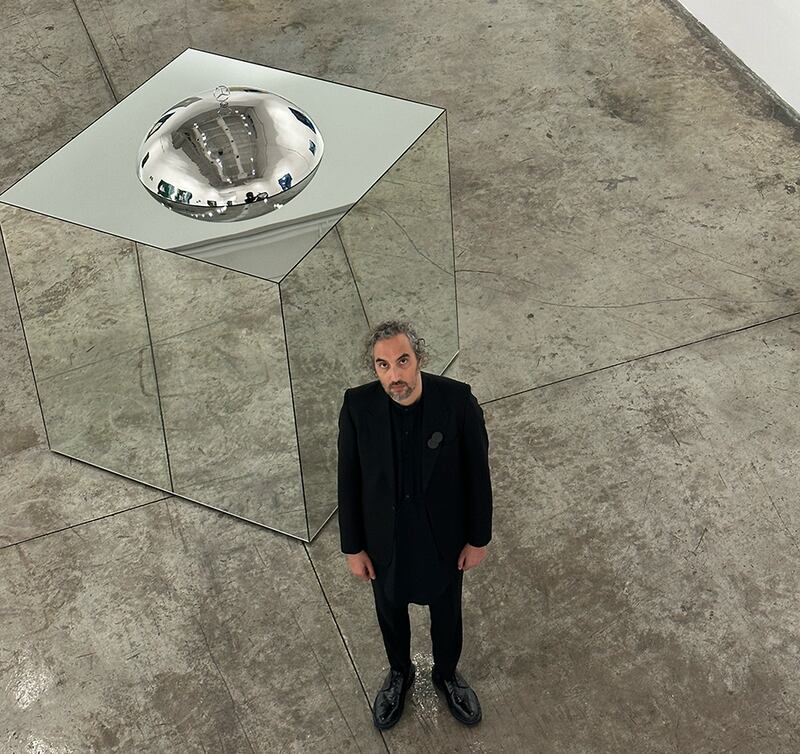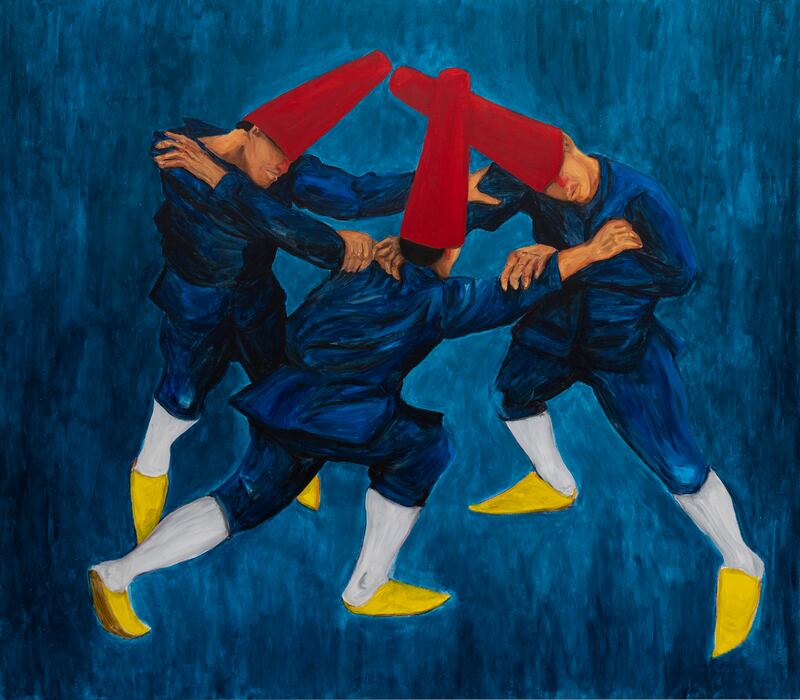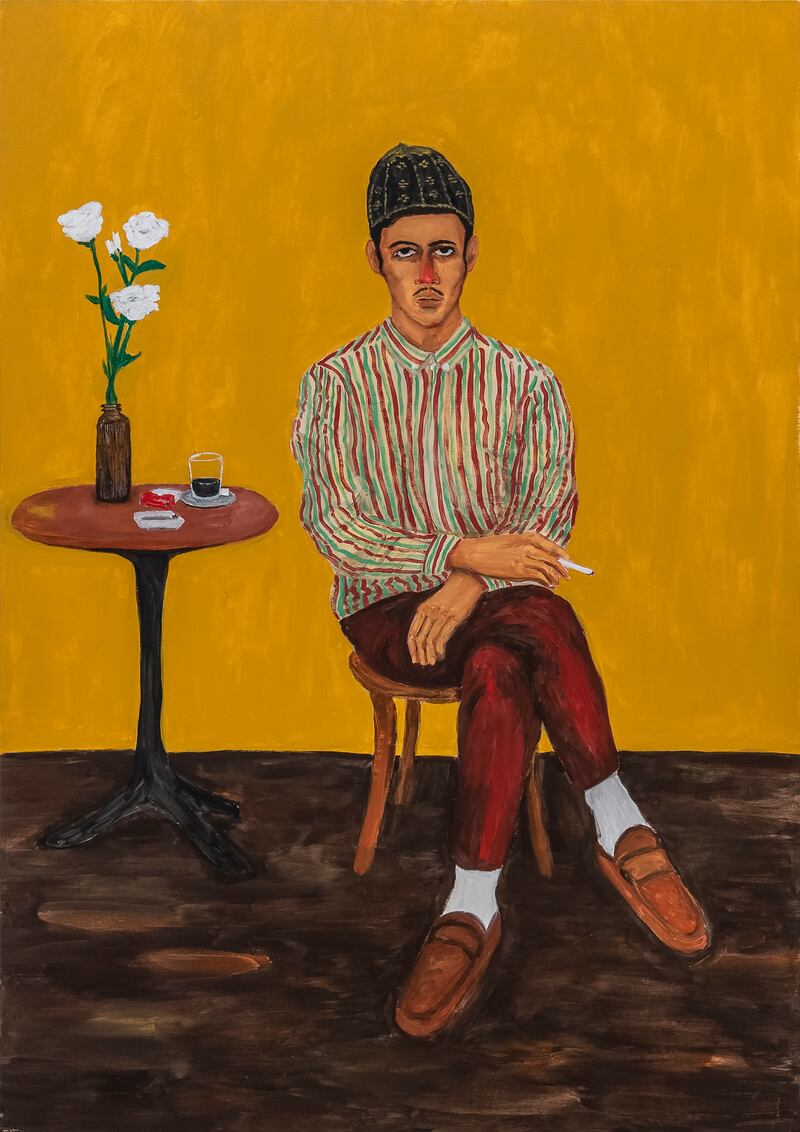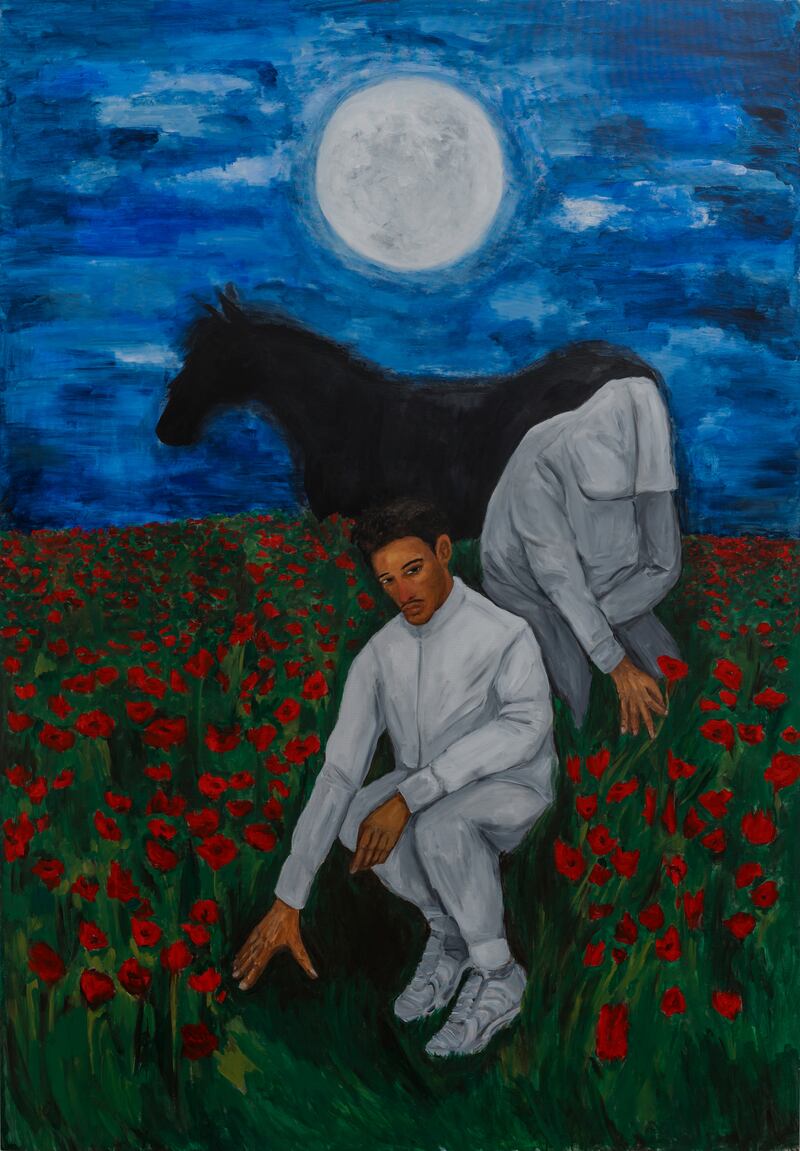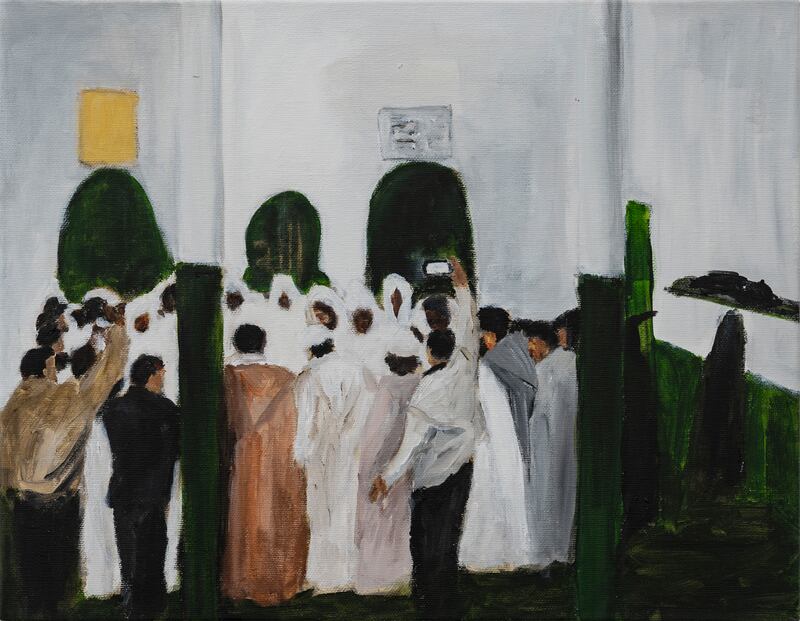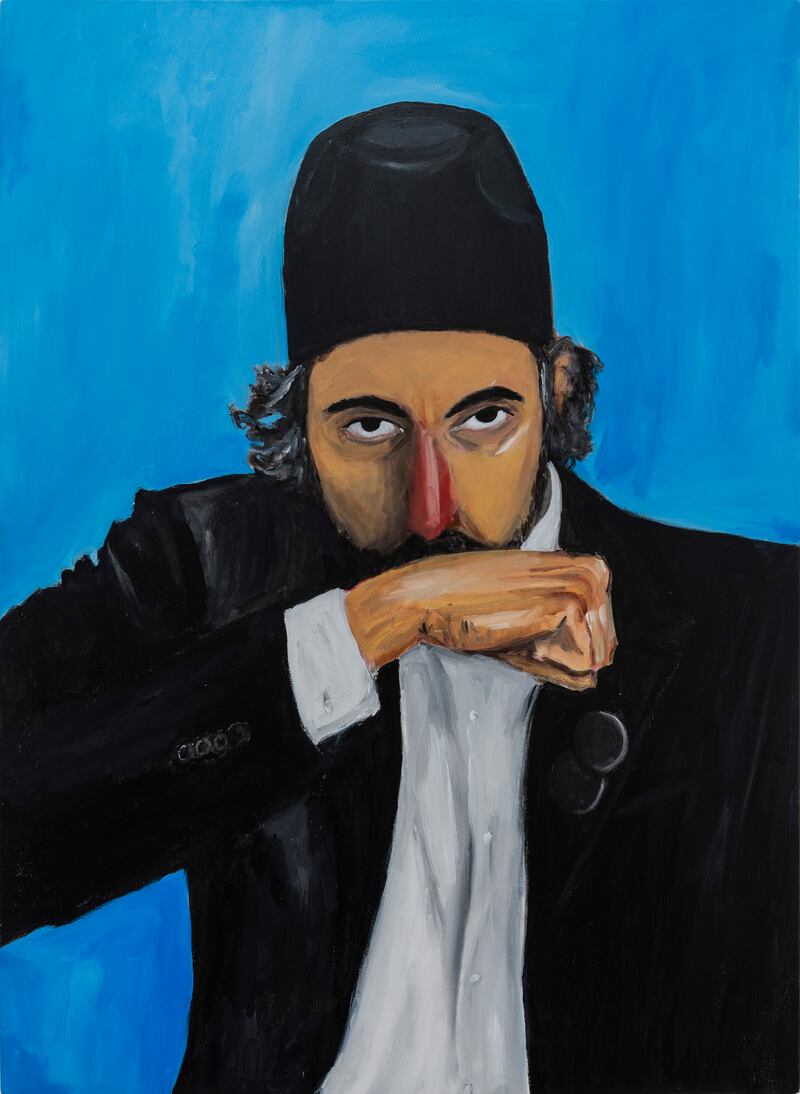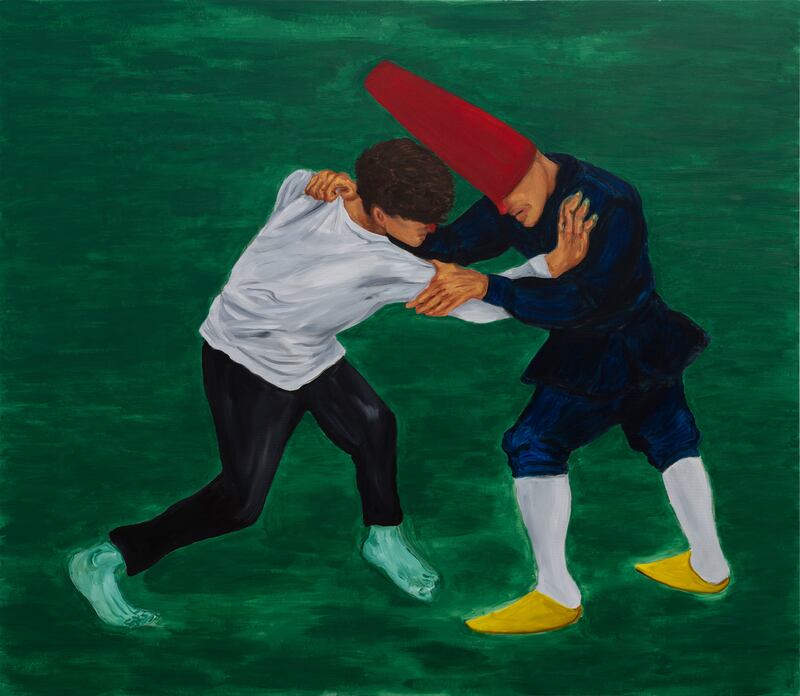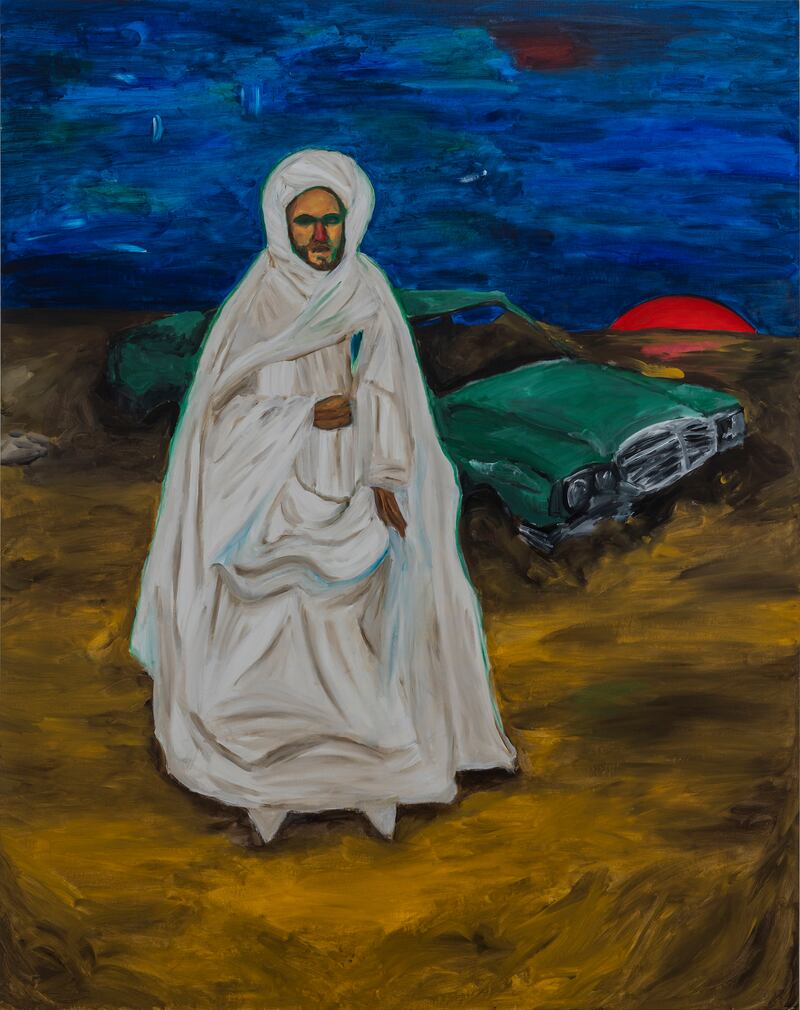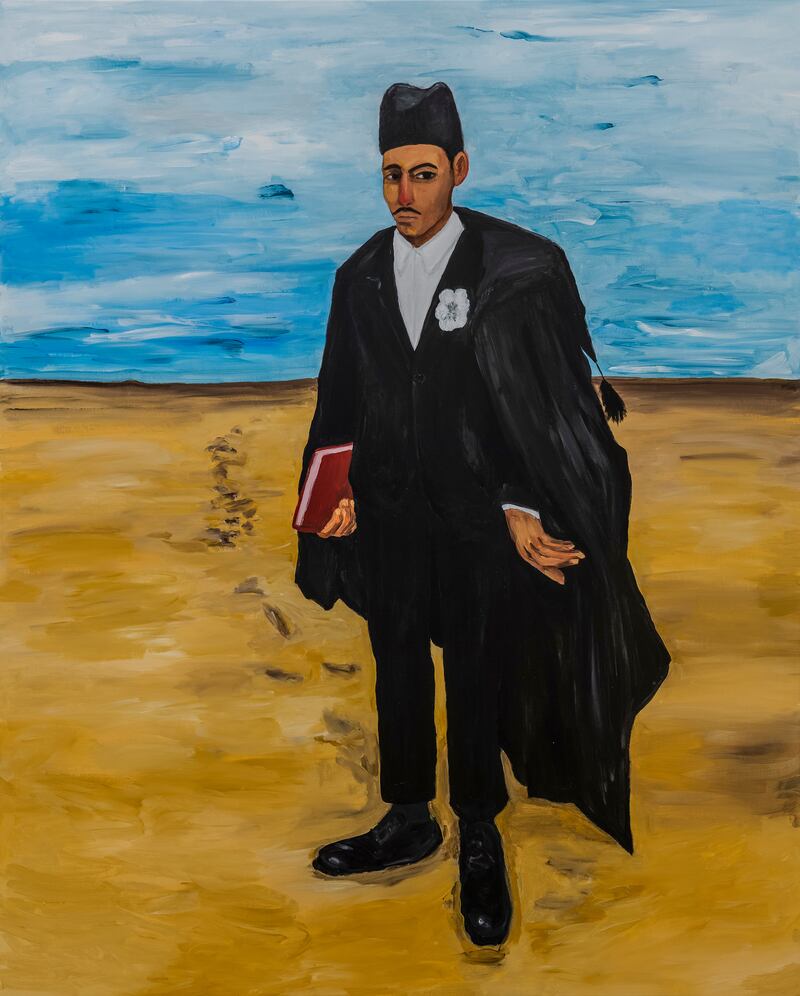The dichotomy of identity is explored in bold, expressive figurative paintings in the solo exhibition of Spanish-Moroccan artist Anuar Khalifi at The Third Line in Alserkal Avenue.
Walking through the exhibition, called Mirror Ball, the viewer is struck by larger-than-life male figures set against colourful backgrounds, whose penetrating gazes are both inviting and proud.
“For a painter, every painting needs to be an iconic image, which is really difficult,” Khalifi tells The National.
“One image can have this power to open debates and be a symbol for a group of people. But it's not something you do on purpose. It’s a body of work — you do one, then the next one. You’re trying to resolve ideas and images.”
Khalifi’s paintings definitely have an aura about them. His figures, partly inspired by real people and partly created from his imagination, are seen in brightly coloured interiors — sitting on a chair, smoking a cigarette or staring pensively. Outdoors, they stand in the desert, under a full moon or ride a horse across the horizon. They are either in mid-action or still as if posing for a photograph.
All of them are dressed in a combination of contemporary fashion, white hoodies and trainers, or in traditional Moroccan kanduras, suits and Sufi-inspired garb.
Deep blues, turmeric yellows, dark emerald greens and bold reds, colours and tones often associated with the Arab region, are applied in balanced excess.
This amalgamation of elements in combination with Khalifi’s modern compositions, expressive brush strokes and his stylisation of elements, creates a surreal, familiar and accessible body of work.
Scroll through the gallery below for more pictures from Anuar Khalifi's Mirror Ball
“I’ve found that people can relate to this exhibition, even if their lives are different from each other,” Khalifi says.
“We Arabs share something because of the geographical places that we are from even when we are in diaspora. We grew up with certain things and traditions. Tradition is there always, it's something you cannot erase, it is in the landscape, it’s in our tongues and the way we interact.”
Influenced by classical painters and Moroccan culture, Khalifi attempts to explore the inner world, the motions of the mind and spirit in a visual manner.
Auto-biographical, imaginative, mystical and full of narrative elements, Mirror Ball is an homage to the continuously evolving journey of the self. The exhibition also includes a large, geometrical, mirrored sculpture in the centre of the space where the characters in the paintings along with the reflection of the viewer morph and intertwine.
Through this new body of work, Khalifi explored the idea of the self and dual identities, particularly that of living as an Arab in a foreign country.
“For me identity and dignity should come together,” Khalifi says. “I think there's certain aspects of the human existence that through human communications or symbols or the size of paintings, the squares, circles, we all can relate to and understand, no matter where we come from.”
As a Moroccan Arab who grew up in Spain, it was important for him to break away from the stereotypes and context in which Arab art and artists often find themselves — particularly in the West.
“Nowadays everybody's talking about representation,” he adds. “But representation isn’t just painting and showing a nice brown subject — this is a kind of Orientalism in the end.”
Khalifi emphasises that while he can’t control the ideas or feelings people have in reaction to his work, his aim while creating was never to make a political or a social statement.
“There is this idea that you are either a victim as an Arab artist or you are you are the vandal, the bad guy,” he says.
“I choose to avoid this type of language. I mean, if you want to be in European museums, and we all know what type of language works there, you can, but I don't want to put more wood in the fire.”
Even though politics are not front of mind when creating, Khalifi also says that, regardless of the artist’s intentions, in the end every work of art is political.
“The fact that we talk about our identity is because of the misrepresentation that exists about us,” he says.
“I'm not here to point to certain things like racism, colonialism, orientalism and all that — I don’t like this idea or this type of question. I only have control over my actions, how I express and solve my own experiences.”
